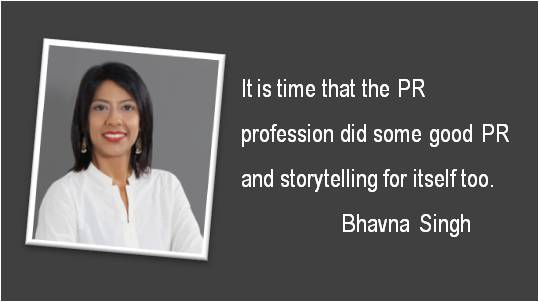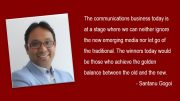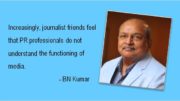My little ten-year old came up to me and asked me, “Mama, you said, you had written this article, but the piece that has appeared today doesn’t carry your name.” I tried to explain to him that I had drafted the release and then began explaining to him what a release was, and what I do, thereof. I struggled to explain to him that neither could I claim to influence people to buy stuff or create catchy jingles as I was not in advertising and neither could I proudly lend my name to a byline in the newspaper he read; because I was no journalist. I salvaged the situation by calling myself a PR evangelist.
Coming to think of it, we PR professionals most certainly undermine our strengths and contribution to the business of persuasion, influence and trust. The Public Relations Society of America defines Public Relations as follows, “Public relations is a strategic communication process that builds mutually beneficial relationships between organisations and their publics.”
I believe that PR is about storytelling and good PR is the art of powerful story telling.
Like every story focuses on the protagonist or the moral, PR evangelists focus on the positives within the organisation and carve out key messages and craft a positive and powerful piece of communication. Having said this, it is also the role of the PR professional to buffer the negative news and manage it, also called fire-fighting in our lingo.
What does it take to become a PR professional? The Princeton Review answers this to some extent: “A public relations specialist is an image shaper. Their job is to generate positive publicity for their client and enhance their reputation … They keep the public informed about the activity of government agencies, explain policy, and manage political campaigns. Public relations people working for a company may handle consumer relations, or the relationship between parts of the company such as the managers and employees, or different branch offices.”
A successful PR professional is one who wears the PR LENS. This means, he/she sees what is ‘news worthy’ content and then carefully integrates it to the PESO approach. Finally, of course, he/she watchfully brings in the analytical viewpoint to measure PR. How many of us do this, everyday, for every client. We take every issue and apply the general rules, but the test is to take each and every initiative and scan it under this lens.
The challenge that most of us face, as PR professionals, is managing the client’s expectations on what is ‘newsworthy’ content and the timing. One has to view this from the perspective of the publication- is it new for my reader? Why should we speak on this now? It can be managed in several ways – opinion pieces, interviews etc. The trick to find out the newsworthiness in any content is to answer the simple question – ‘What’s the story?’ Another approach is to use the content and tweak it to become newsworthy when there is an opportunity or a story that the publication is working on.
These days, for messaging to stay current, it calls for integration of PR with the PESO model as all clients demand the ‘biggest bang for the buck’. Is the news worthy to be paid and advertised, should the earned route (and therefore PR) be used to endorse the importance of a particular product/service rather than simply drive the message of ‘buy it’. Should one use shared media and social media platforms; does Digital PR have a role to play; or should one use the owned media space –of leveraging your own website.
Once the media route is identified and worked upon, then comes the test of the pudding –the measurability of this exercise. For paid media, the Google Adwords, new followers, leads, conversations are measurables; new relationships and new audiences can be attributed to earned media, the number of tweets; retweets and comments give a fair idea of the ambassadors built in the shared media space and finally the bounce rate of your website; downloadable content etc could identify the effectiveness of the media used.
Coming back to the conversation with my little fellow on being a PR evangelist, he simply told me that “you do all of this for others, but no one really knows what your work is all about.” Is it time that the PR profession did some good PR and good storytelling for itself?







Time the profession gets its due.
As rightly captured by your son “you do all of this for others, but no one really knows what your work is all about.”